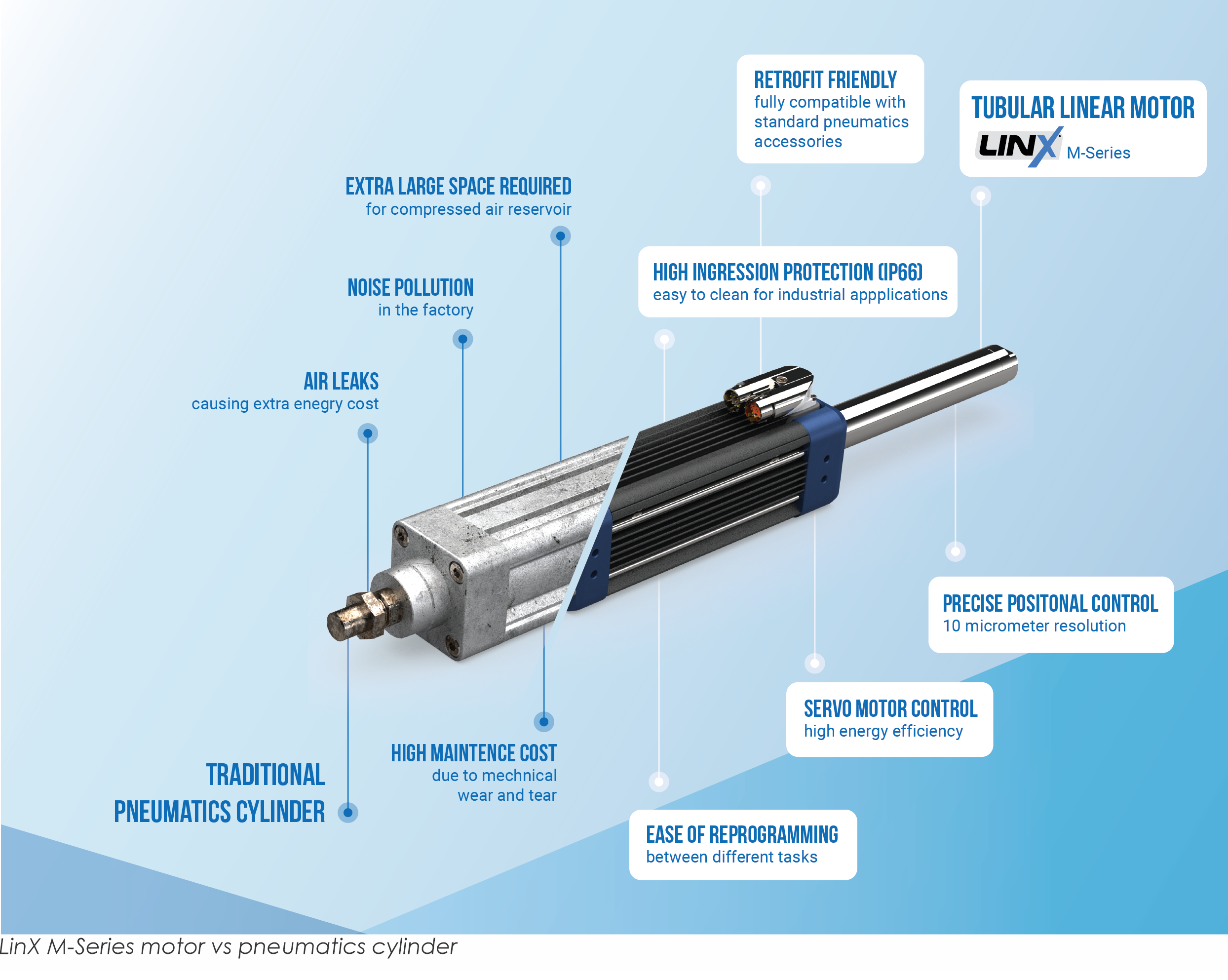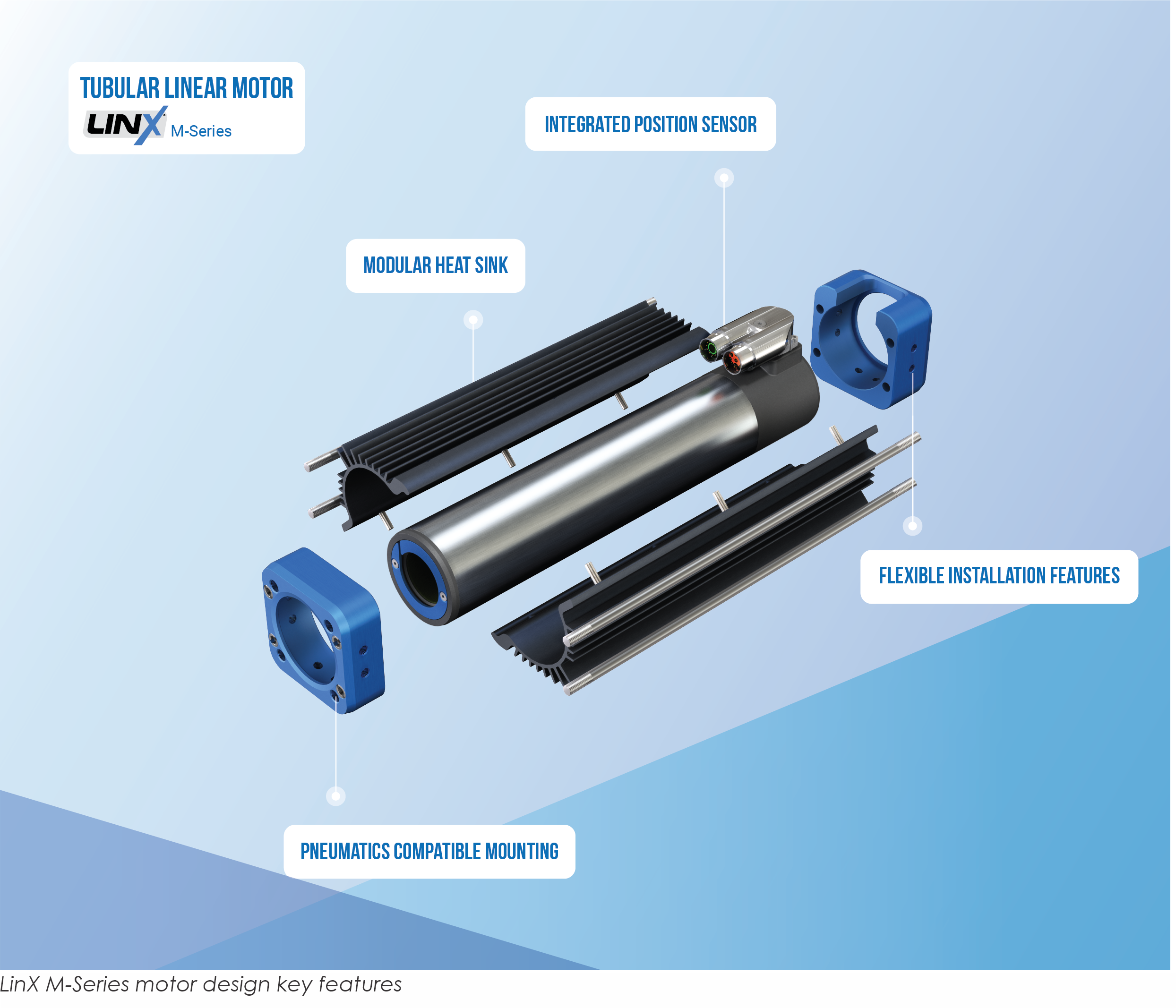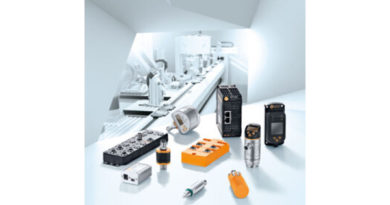What makes tubular linear motors a superior alternative to pneumatics?
The history of linear electric motors dates back to the 1840s, when Charles Wheatstone presented the first linear motor to the public. Constructed as a flat linear motor, the model primarily served to research the electromagnetic relationships; however, it was too inefficient to be practical. In 1935, German engineer Hermann Kemper built a working model and in the late 1940s, Dr. Eric Laithwaite of Manchester University developed the first full-size working model with the help of Charles Wheatstone’s early research.
Pneumatics, on the other hand, is a technology that has been recognised and used by humans for thousands of years, dating as far back as 429 AD when primitive hunters used blowguns to shoot their prey. In 1650, German physicist and engineer Otto von Guericke invented the first vacuum pump that made use of pressurised air, which he used to study the phenomenon of vacuum and the role of air in combustion and respiration. Following Guernicke’s invention, the 1800s brought upon many more pneumatic inventions due to businesses and inventors recognising its potential.
Despite a long history that precedes linear motors technology, there are several areas where pneumatics falls short compared to linear motors.
First, we will look at costs. For factory operators looking to save energy and costs, an obvious first place to look is compressed air. Compressed air is highly useful in many industrial applications, and some sites spend up to 30% of their electricity bill generating compressed air.
Pneumatic actuators, which run on compressed air, have been around since World War II. They are well-understood, cheap, and suited to harsh environments. However, they also come with their penalties. Obviously, compressed air must be generated to power them. Depending on the expansiveness of a factory, this can mean numerous compressors and/or a complicated reticulation system. A reliable level of pressure must be maintained, or pneumatics will work poorly or not at all.
Air leaks can be expensive. According to a leading compressor technology company, one leak in one unit costing 7 INR/kW/hr to operate will represent well over 90,000 INR a year to a power bill. With a single point of failure – for example air leakage at one location – the air pressure of the whole plant will drop, and operations will be affected.
Then there is the noise. Those working in or visiting a factory will usually hear a lot of noise from pneumatics – and that’s one big advantage servo-controlled linear motors have against them.
Another drawback of pneumatics is the need for a big space for its reservoir to store the compressed air, as well as the need for annual maintenance due to mechanical wear and tear on the compressor. In the case of LinX®, no maintenance or comparatively very less maintenance is needed.
In chemical or oil fume environments, the pneumatic pipes get hardened after years and need replacements which otherwise can cause failures or serious accidents. With better IP protection in LinX® such challenges are easily overcome.

The advantages of tubular linear motors Linear motors – for example screw-driven and tubular linear kinds – are newer than pneumatic or hydraulic options but are preferred for certain applications. Instead of a piston in a cylinder – driven by compressed air or an incompressible fluid – tubular linear motors use magnetic flux to create motion. They aren’t as cheap in upfront costs compared to pneumatics, but offer vast benefits in aspects including accuracy, cheaper operating costs, and flexibility.
Pneumatics can move quickly and forcefully from one point to another (and hydraulics slower but more forcefully still, for the same size) but with little positional control along the stroke.
ANCA Motion’s LinX® M-Series offers 10 micrometer resolution, as well as velocity up to 10m per second and maximum acceleration over 30G. The M-Series comes with an integrated position sensor, with precise positional control. It can also achieve a continuous force of 80-287 Newtons, and a peak force of 1,200 Newtons. An estimated payback period versus pneumatic cylinders – which with their form factor and mounting design, the M-Series is a neat substitute for – is only 6-12 months.
One area of obvious advantage over pneumatics is the ease of reprogramming between jobs. A recent application for a customer’s forming machine substituted LinX® motors for pneumatics to move a cutting bed. Changes for different workpiece lengths could take six to eight hours for the painstaking recalibration of air pressure. Such adjustments now are a quick change in servo drive parameters – a matter of seconds. The improved positional control has boosted throughput by 50%, with the massively improved precision allowing the process to be confidently sped up.
In typical pick and place, gantry or robotics applications, there is common usage of precisely pressure-controlled grippers. In the applications such as handling of glass, any pressure variations may sometimes cause accidents. The use of LinX® in such applications is highly advisable. With a hygienic design, the LinX® M-series motors is also suitable for application in industries with stringent
requirements such as food and pharmaceutical.
The M-series motors have a water-cooling jacket option available, which functions by creating a fluid gallery around the outer motor bore through which coolant can be circulated. Using the water-cooling jacket kit provides the best possible cooling performance and the highest continuous force from the motor. Its IP66 rating means that the LinX® system is easy to clean with an industrial cleaning agent.
As an ideal replacement to retrofit pneumatic cylinders, the LinX® M-series motors are optimised to ensure the minimum effort and impact to end customers. One of the key features is that mechanically the motor is designed to be fully compatible with standard pneumatics accessories, such as mounting plates, linear guides and coupling pieces. For retrofit projects, this means the LinX® M-series motors can be easily integrated, while for new machines this allows machine builders access to a wide range of standard accessories.

Tried and tested technology by ANCA Motion ANCA Motion’s linear motors were originally developed for sister company ANCA CNC Machines’ FX Linear and MX Linear tool and cutter grinder machines. Robust support is offered through an international network of 125 engineers in strategic locations.
ANCA Motion designs and manufactures flexible control systems, specialising in high precision solution for CNC and Automation. With headquarters in Australia and representation in the rest of world directly and indirectly, ANCA Motion has been involved in motion control for more than 45 years. Its CNC and motion control technology has evolved over this time by proving its performance in demanding applications such as five-axis grinding, high speed laser cutting and Factory Automation. The highly talented and passionate team at ANCA Motion has on several occasions partnered with customers to create a bespoke solution satisfying their unique needs. AM offers a range of solutions from turnkey automation control packages to single components such as servo drives, motors, IO modules, HMI and software.
For more details, please contact: 
ANCA Motion
1 Bessemer Road, Bayswater North, VIC, 3153
Australia T: +61 3 9751 8900
India T: +91 636 644 9980
www.ancamotion.com
sales@ancamotion.com



